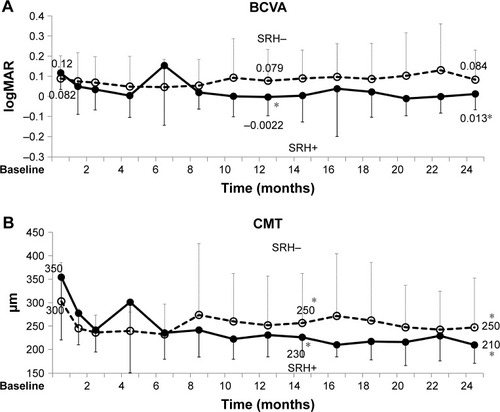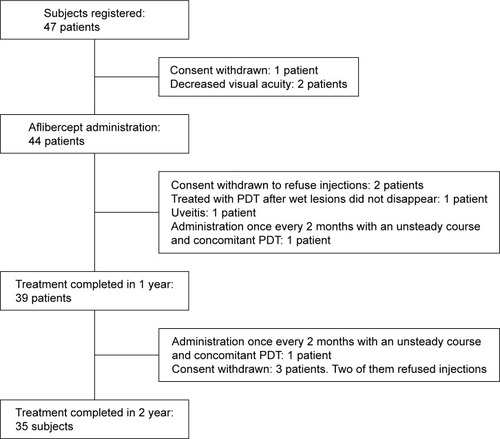Figures & data
Table 1 Enrolled patient characteristics
Table 2 Baseline characteristics of tAMD, type 1 PCV, and type 2 PCV
Figure 2 Indocyanine green angiogram of representative cases of type 1 and 2 PCV.
Abbreviation: PCV, polypoidal choroidal vasculopathy.
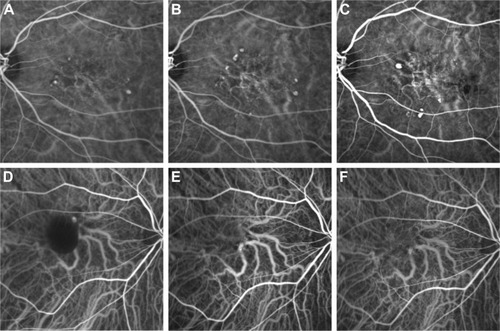
Figure 3 BCVA over 2 years of treatment (mean, SD).
Abbreviations: BCVA, best-corrected visual acuity; IVA, intravitreal aflibercept; logMAR, logarithm of minimum angle of resolution.
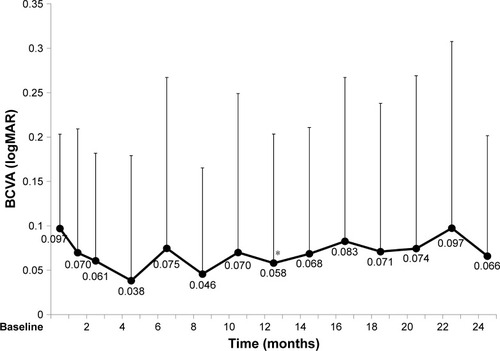
Figure 4 CMT over 2 years of treatment (mean, SD).
Abbreviation: CMT, central macular thickness.

Figure 5 BCVA and CMT over 2 years of treatment in tAMD (tAMD [AMD] without PCV and retinal angiomatous proliferation) and PCV (mean, SD).
Abbreviations: AMD, age-related macular degeneration; BCVA, best-corrected visual acuity; CMT, central macular thickness; logMAR, logarithm of minimum angle of resolution; PCV, polypoidal choroidal vasculopathy; tAMD, typical age-related macular degeneration.
![Figure 5 BCVA and CMT over 2 years of treatment in tAMD (tAMD [AMD] without PCV and retinal angiomatous proliferation) and PCV (mean, SD).](/cms/asset/3216806e-e9a6-4408-a2df-5ce293d89367/doph_a_160961_f0005_c.jpg)
Figure 6 BCVA and CMT over 2 years of treatment in type 1 PCV and type 2 PCV (mean, SD).
Abbreviations: BCVA, best-corrected visual acuity; CMT, central macular thickness; logMAR, logarithm of minimum angle of resolution; PCV, polypoidal choroidal vasculopathy.
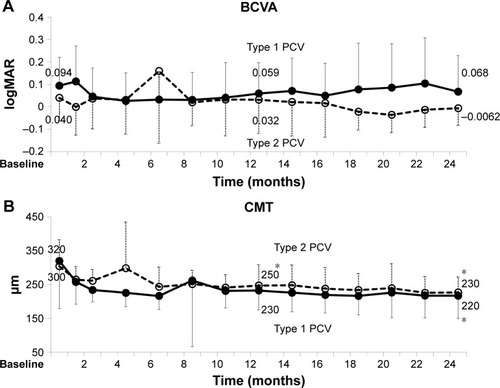
Table 3 Analysis of baseline characteristics and mean change of logMAR BCVA
Figure 7 BCVA and CMT over 2 years of treatment in eyes with and without baseline SRH (mean, SD).
Abbreviations: BCVA, best-corrected visual acuity; CMT, central macular thickness; logMAR, logarithm of minimum angle of resolution; PCV, polypoidal choroidal vasculopathy; SRH, subretinal hemorrhage.
